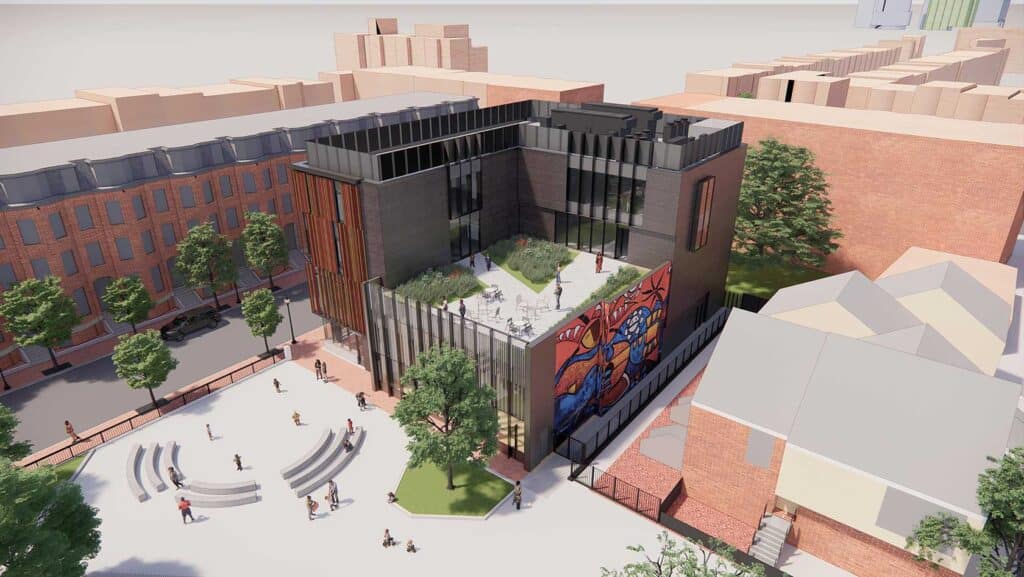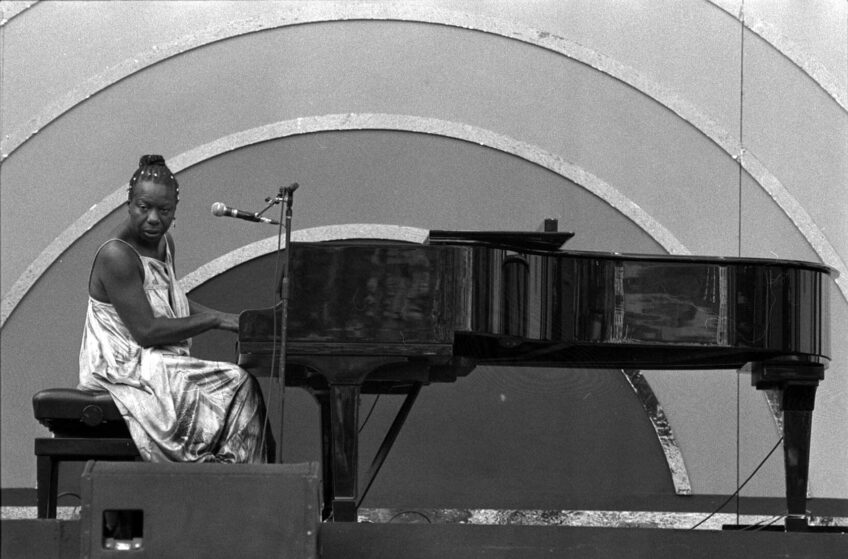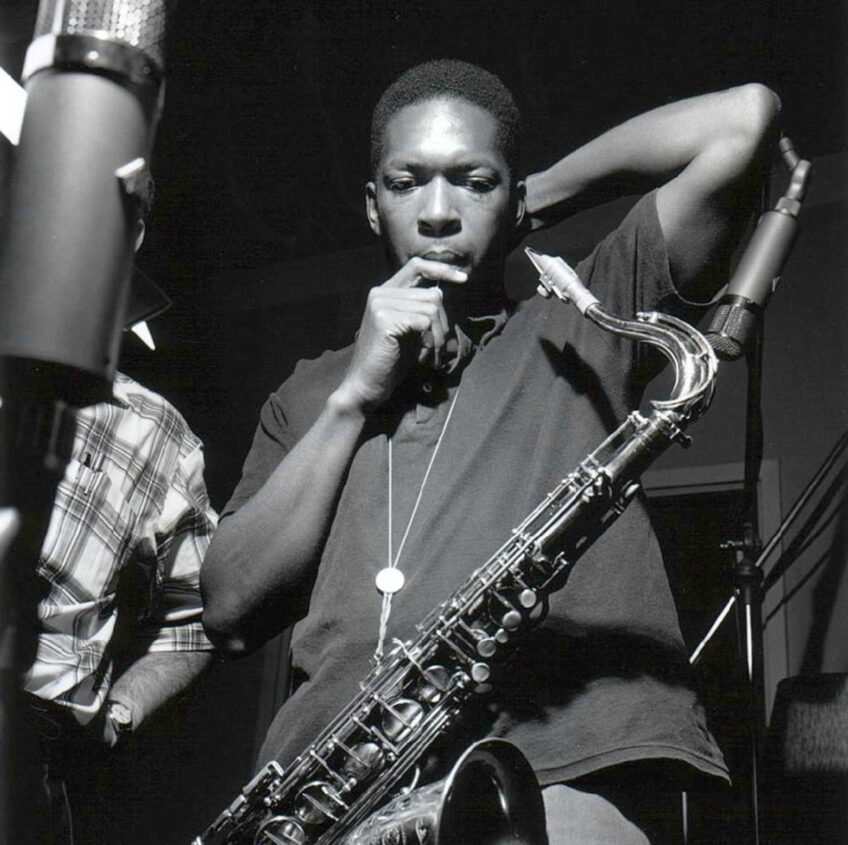
During Women’s History Month, women in many sectors and fields are celebrated. Yet, an often-overlooked segment are is women in the arts, particularly women artists of color. Throughout history, women of color have ignited social transformation through artistic expression but barriers to recognition and leadership opportunities persist. This month, it’s important for those of us who work in the arts to evaluate how we can uplift the contributions and impact of this often-overlooked group of women. As leaders of a community development organization with deep roots in Boston’s South End and Puerto Rican communities, we witness daily how arts and culture catalyze change, particularly when BIPOC women are platformed and positioned at the helm.
Women play an integral role as drivers of social change. Our unique perspectives and experiences empower us to advocate for justice, equity, and progress, fostering environments that encourage collaboration and inclusivity. The arts serve as a powerful medium for building community, and women artists hold tremendous power in leading this transformation. Through their creative expressions, they not only reflect the diversity and richness of community identity but also inspire dialogue, understanding, and solidarity. By harnessing the power of the arts, women artists, like Boston’s Ashley Martinez Rivera, Silvia López Chavez, Victoria DelValle, Fabiola Mendez and Veronica Robles, contribute significantly to creating strong, resilient communities that are equipped to address the challenges of our time.
Whether it’s through murals, music, sculptures or literature, the vibrancy of Latino artist expression highlights the power of community and a collective identity. Each year, thousands gather for events like Inquilinos Boricuas En Acción’s (IBA) Festival Betances, New England’s longest-running Latino cultural festival, the Tito Puente Latin Music Series and various visual arts showcases. These celebrations not only honor Latino culture but also illustrate how cultural programming strengthens identity and fosters solidarity while providing a platform for women artists making an impact in their communities. Over the past five years, IBA has featured over 30 Latina artists through various initiatives and continues to make this a priority.
As we recognize the importance of these initiatives, it becomes clear that breaking the cycle of underrepresentation requires bold, decisive, and intentional action. This is the kind of action we’re seeing from our neighbors, partners, and friends at this moment. The action of the Boston Public Art Triennial, which will bring more than 15 public art installations — five of whom are women artists from Latino and Native backgrounds — to communities historically excluded from modern art conversations: Mattapan, Dorchester, Roxbury and East Boston. The action of Embrace Boston, which launched its summer music festival, Embrace Massó “¡Con Salsa!” International Music Festival creating a space to celebrate Afro-Latino identity and expression. And the action that we are taking at IBA by building La CASA: The Center for Arts, Self-determination, and Activism, a $33 million Latino community and cultural center coming to the South End in 2026.
Creating these dedicated spaces, whether permanent or temporary, provides wider reach for Latina artists and other women artists of color. These ventures are no small feat. They require thousands of hours of labor from by staff and volunteers, multimillion-dollar investments from our organizations, and the financial support of our donors and partners in the private, public and philanthropic sectors.
The impact of such investment extends far beyond the arts sector. The evidence shows that diversity in leadership yields stronger organizations and more vibrant communities. When BIPOC women artists lead projects and cultural institutions, they bring unique perspectives that enhance programming and ensure authentic community engagement. Their leadership can also have ripple effects across education, economic development, and social services. Studies indicate that organizations led by diverse leadership teams make better decisions and achieve stronger outcomes, particularly important as we seek to morph transform culture into a tool for social equity and inclusion.
Our organization’s integrated approach is a testament to this philosophy: The arts are part of the foundation for any healthy community. Arts programming creates a space for any community’s residents to thrive and self-actualize. At IBA, it complements our affordable housing initiatives, financial empowerment services, education programs and youth development efforts — and when our residents are taking an interest in creating and making, we know the rest of their fundamental needs are being met. IBA’s holistic model recognizes that cultural expression and community well-being are inextricably linked. And as a national model for community building, we want others to understand the value of creating a sustainable model for arts in affordable housing communities.
Supporting BIPOC women’s leadership in arts and culture demands that the art community recognize the unique value proposition women BIPOC artists bring to the table and reckon with how they have been minimized and barred from their deserved seats. Then we must take action. Organizations must create intentional pathways to leadership positions, provide mentorship opportunities, and ensure equitable compensation. Funders must prioritize organizations led by women of color and support initiatives that amplify diverse voices. This includes addressing funding disparities that often see smaller, BIPOC-led organizations receiving disproportionately less support than larger mainstream institutions. As the funding landscape evolves, equitable distribution of resources becomes predominant to ensure traditionally overlooked perspectives receive the necessary support to thrive.
We must ensure that the next generation of artists and cultural leaders see themselves represented and supported. We all benefit from an arts landscape where talented, diverse women artists’ contributions are valued and compensated. In times when our communities are under attack, systemic change and systemic protections must be enacted to ensure that our artists of color, especially women, are able to continue to push humanity forward through their creativity. Our commitment must be more than rhetoric — it should guide us toward a more inclusive future that enriches society as a whole.
Dr. Vanessa Calderón-Rosado is the CEO of Inquilinos Boricuas en Acción, a community development corporation dedicated to empowering and engaging individuals and families to improve their lives through high-quality affordable housing, education, and arts programs. is the organization’s chief operating officer. Together, they have helped expand the availability of affordable housing for Boston’s historic multicultural communities and created access to art in community building.






